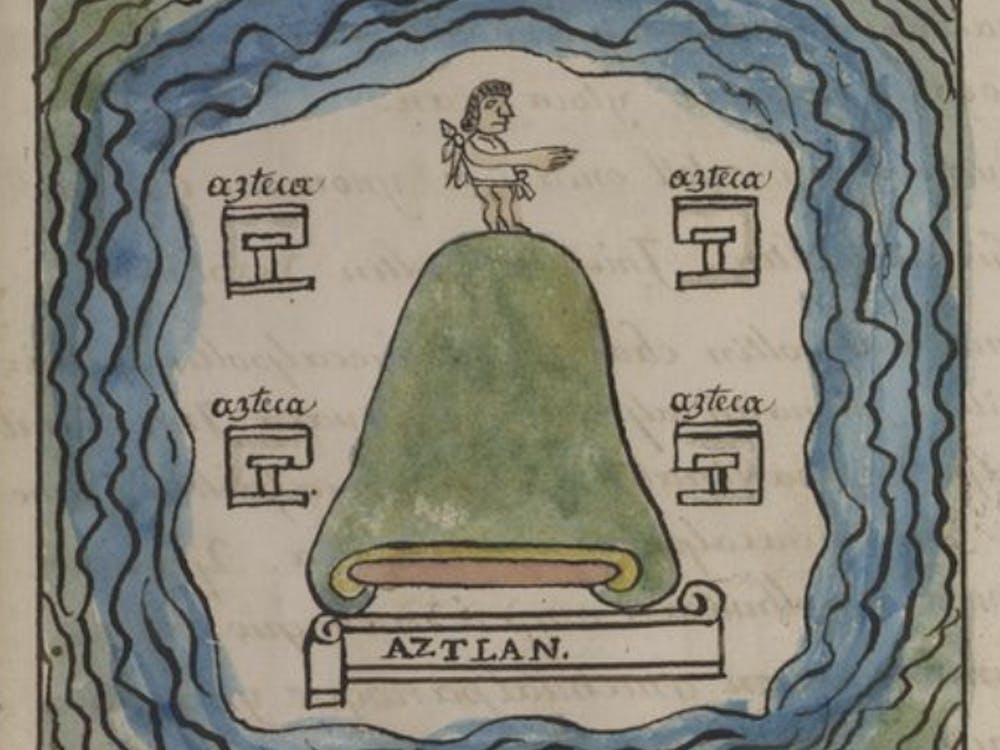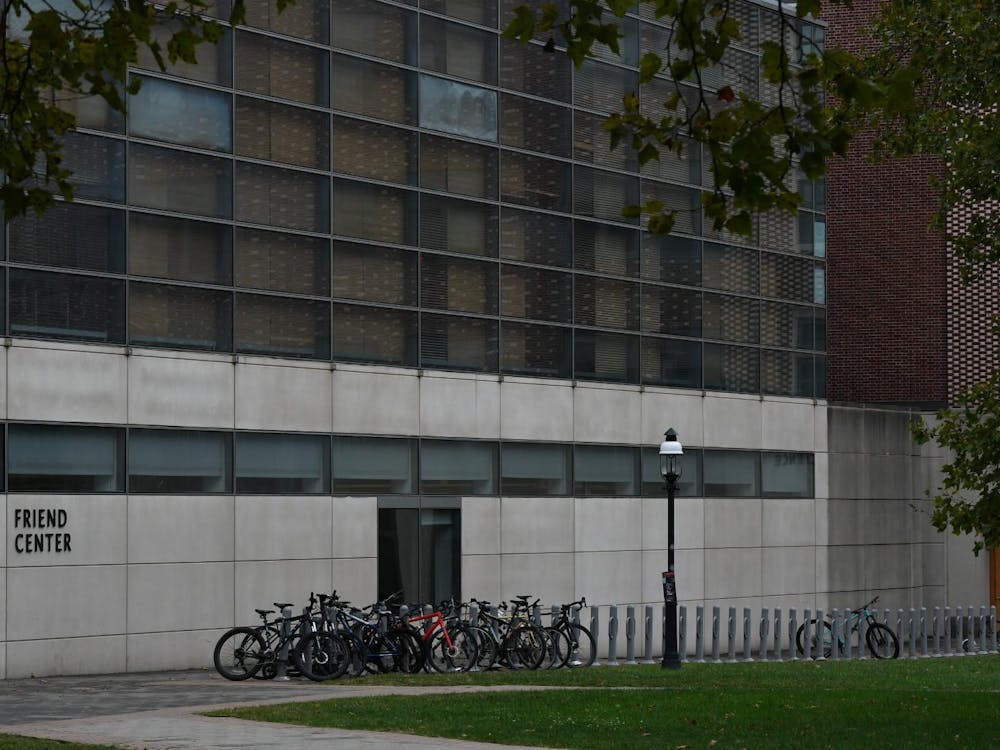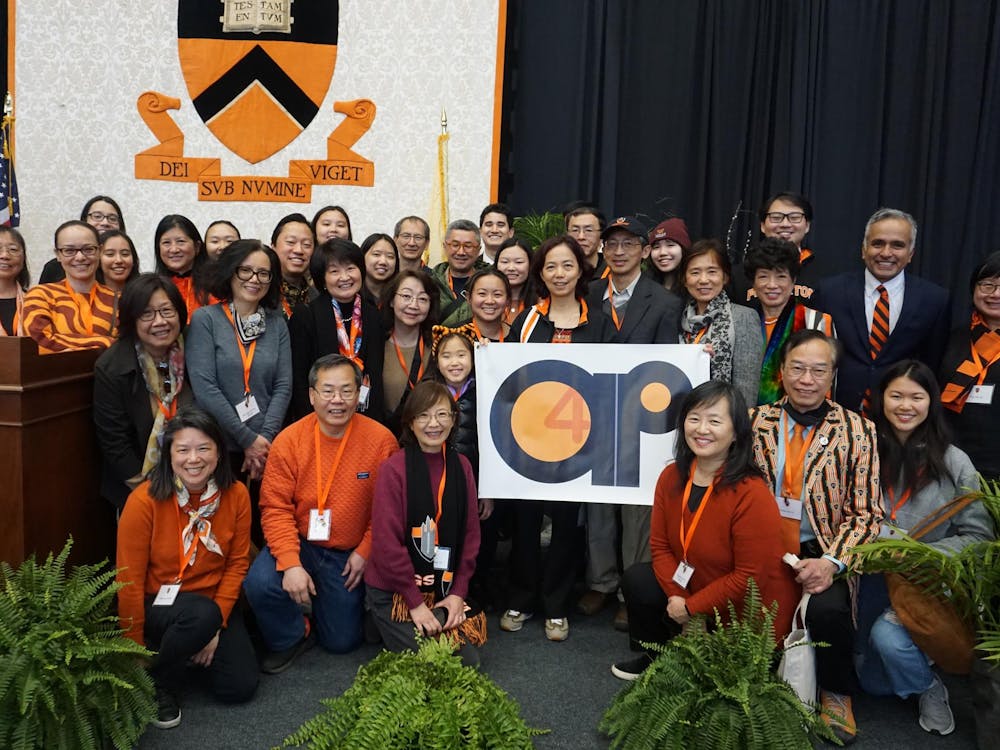In the shadow of Fine Hall’s imposing tower lies a curious steel-sheathed building, which in 2008 marked the beginning of a dynamic new space at Princeton. Besides having an iconic, abstract modern design, the Lewis Library also challenges the idea of what a library should be — but not without controversy.
Named after principal donor and University trustee Peter B. Lewis ’55 who passed away last November, Lewis Library was designed by famed architect Frank Gehry, known for the Walt Disney Concert Hall in Los Angeles.
“Princeton and Frank Gehry came together at a time that worked for both of them,” University Architect Ron McCoy GS ’80 said. “Gehry came to Princeton when he had a mature sense to make a successful building technically.”
Lewis Library is connected underground to the natural sciences complex, which is composed of McDonnell, Fine and Jadwin Halls. The library itself houses materials from different fields, such as a map and a Geographic Information Systems facility, as well as collections on astrophysics, chemistry and neuroscience.
Despite the extensive collection of books stored in Fine and on the lower levels of Lewis, many students observe that there aren’t many books in the major reading areas.According to Gehry Design Partner Craig Webb ’74, the building “was envisioned as a library looking to the future. As books become less important in the digital world and in the sciences specifically … this library was seen more as a study space.” In addition, the library was also meant to be a collaborative space, “where science students and faculty would meet and work, where scientists from different disciplines would have chance encounters.”
The new conception of a library as a collaborative, interdisciplinary space challenges the traditional library’s function of being a repository for books. For Princeton historian W. Barksdale Maynard ’88, Lewis Library is “a glorified conference facility where you meet people and bring your laptop.”This observation points to a larger shift in information technology: In an era when most sources can be accessed online or through shared library collections, such as the Research Collections and Preservation Consortium, are libraries even necessary for academic institutions?
“All organizations change … based on the needs of the people who need the information,” Assistant University Librarian Patricia Gaspari-Bridges said. “A library continues to serve these needs.”
Exemplifying the desire to provide collaborative study spaces is the Treehouse reading room, located on the second floor of the library. According to Webb, the space was originally intended to be a map room, but was designed to become a study space after the majority of the map collection became digitized.“We originally called it the ‘Turtle’ because of its shape,” Webb said.“Once the steel frame was up, it became clear that the surrounding trees created the ambience of the room. The name followed.”
Although the Treehouse offers a unique study space, its large footprint comes at the expense of the general intuitiveness of the library’s layout.“The slightly most inconvenient part of it is to walk in the main front door and then have to descend to the floor below [and walk back upstairs again],” Gaspari-Bridges said.
The ascension into the Treehouse also requires walking up a nondescript fire stair, instead of a public stair inside of the main building. McCoy explains that this phenomenon is a result of the small floor plate, which would not have been able to accommodate a large study space if a dramatic, public stair was used. In addition, the main stair that descends from the front door was intended to create a diagonal pathway that reflected other walkways on campus.“It’s a tradeoff between preserving as much space as possible for readers,” McCoy said.
The upper two floors of Firestone Library have been remodeled with the emphasis of collaborative space in mind, while still retaining Princeton’s core repository for books. However, this isn’t to say that all libraries will follow the Lewis model.
“There are lots of different libraries for different uses,” McCoy said. “[Lewis Library presents] a fantastic opportunity for a place of learning.”









